Privacy Policy | Terms and Conditions | Disclosure Statement | License Policy
COPYRIGHT © 2024 | NUMBER 8 COOKING | ALL RIGHTS RESERVED.

Privacy Policy | Terms and Conditions | Disclosure Statement | License Policy
COPYRIGHT © 2024 | NUMBER 8 COOKING | ALL RIGHTS RESERVED.

Privacy Policy | Terms and Conditions | Disclosure Statement | License Policy
COPYRIGHT © 2024 | NUMBER 8 COOKING | ALL RIGHTS RESERVED.
The power of cooking with fresh herbs is the secret seasoning ingredient of any seasoned chef. They have the power to transform ordinary dishes into extraordinary culinary experiences.
They add layers of flavor, aroma, and visual appeal. In this guide, we’ll explore nine essential herbs – thyme, rosemary, sage, chives, basil, cilantro, oregano, marjoram, and bay leaf.
ADVERTISEMENT CONTENT BELOW
They can transform an ordinary dish into something spectacular. A small sprinkling of chopped fresh herbs can instantly brighten flavors, adding a delightful aroma and freshness to any recipe.
We will take you on a journey detailing their culinary uses, preparation techniques, and storage methods. With these herbs in your kitchen arsenal, you can transform dishes into culinary masterpieces.

My top 9 fresh herbs I use when cooking. These nine herbs have become staples in my kitchen, I am lucky as most grow wild in my garden. Each bringing its own unique essence and culinary magic to the table.
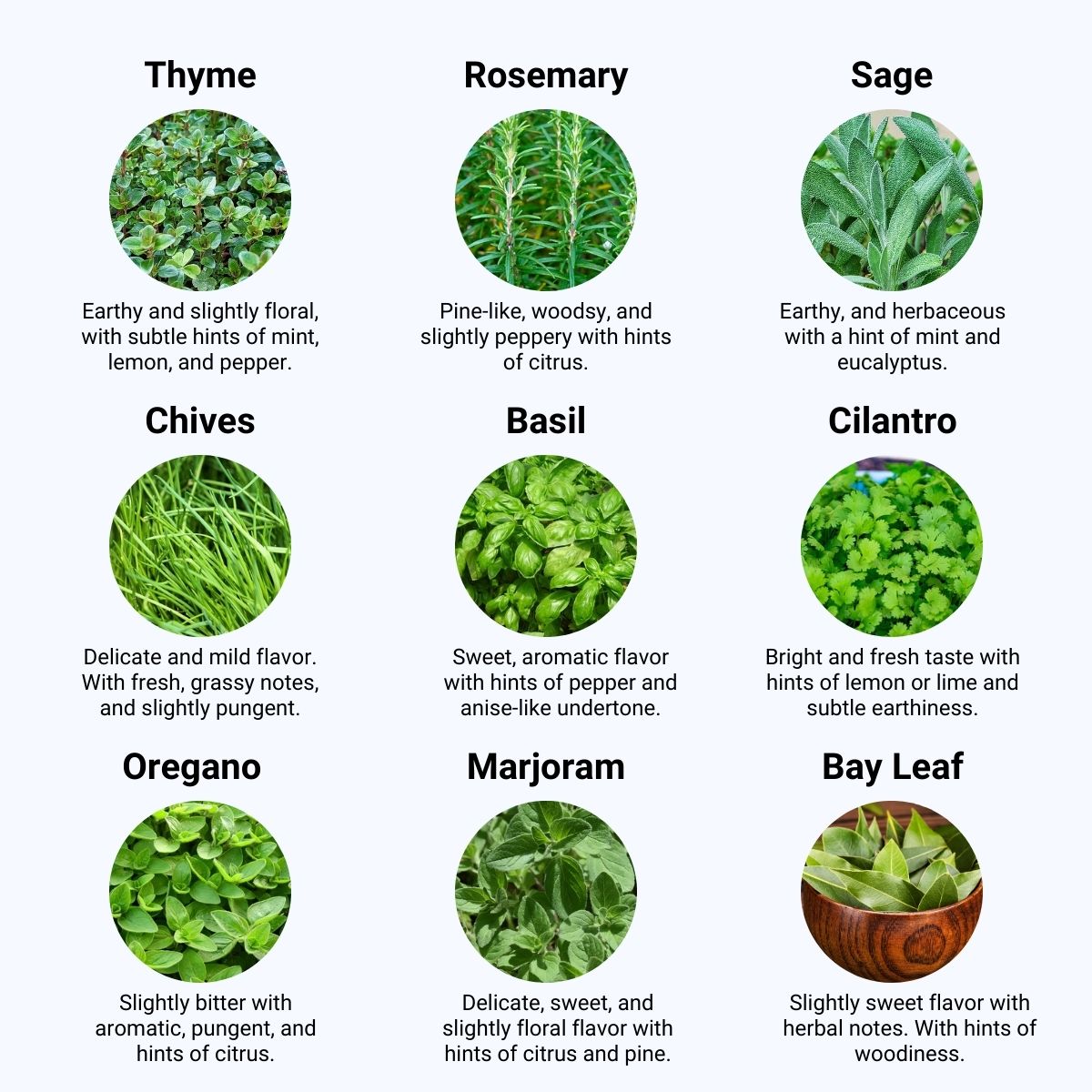
ADVERTISEMENT CONTENT BELOW
Before diving into specifics on individual herbs. Let’s review the most common varieties called for in recipes:
While dry herbs have a place in most pantries for their convenience and prolonged shelf life. Cooking with fresh herbs offers an unmatched vibrancy of flavor and color.
The difference in flavor intensity means you’ll use smaller amounts of dried herbs than fresh ones. As a general rule of thumb, use one-third the amount of dried when substituting for fresh. For example, one tablespoon of chopped fresh basil equals one teaspoon of dried basil.
Does this make dried herbs are better? No, while dried herbs have a more intense flavor, they lack the vibrancy and freshness found in fresh herbs. Hence, my preference always leans towards utilizing fresh herbs.
Before using fresh herbs, whether store-bought or harvested from your garden. Rinse them under cold running water to remove dirt and grit.
Gently swish the sprigs around in cold water and pat dry with a paper towel or salad spinner. Inspect the fresh herbs for any small insects, or dirt and if required repeat the washing process.
ADVERTISEMENT CONTENT BELOW
Follow these storage tips to maximize the freshness and shelf life of just-purchased herbs or herbs harvested from your garden. As long as leaves remain perky, they’ll retain good flavor for four to five days stored one of these ways.
These nine culinary herbs have endless possibilities. I’m always cooking with fresh herbs, they are a staple in my kitchen. Where I continuously strive to unlock their full flavors and harness their versatility to elevate every dish I create.
Cooking with fresh thyme — Savory thyme imparts flavors of subtle mint and lemon with floral undertones. It pairs exceptionally well with poultry, fish, eggs, mushrooms, lentils beans and beef steaks. It also nicely complements tomatoes, onions and garlic.
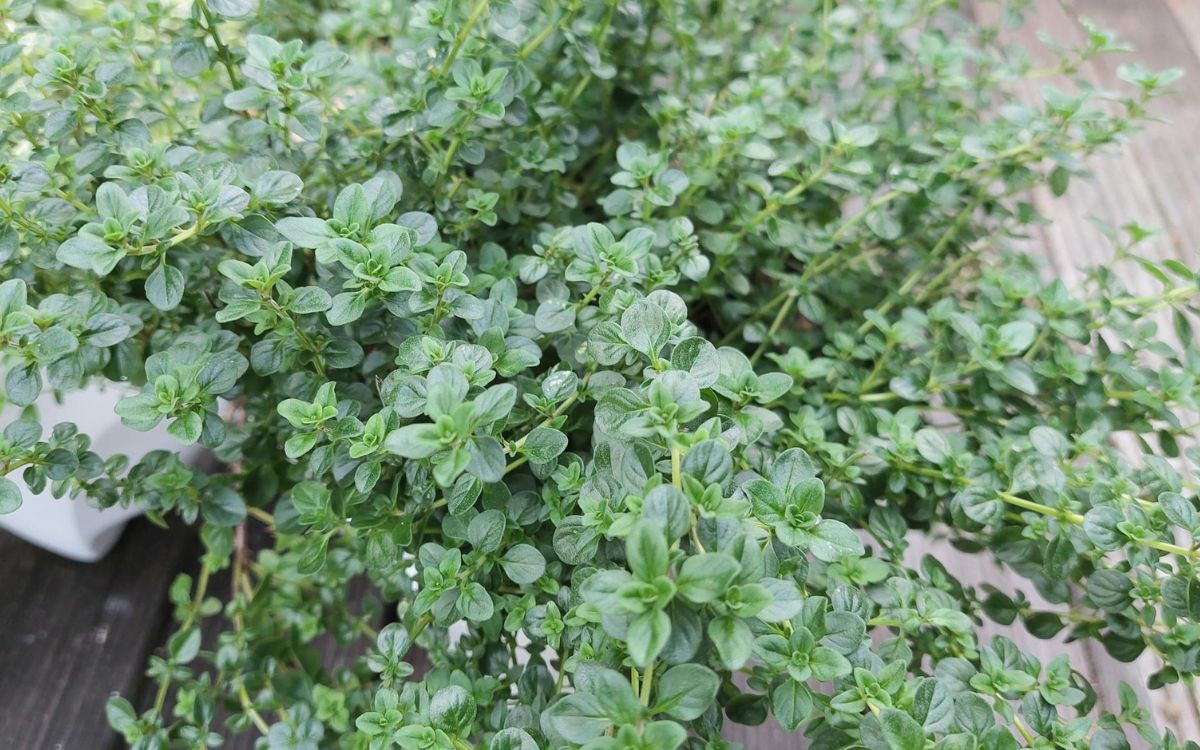
ADVERTISEMENT CONTENT BELOW
Cooking with fresh herbs — Save the woody thyme stalks they make for great flavor enhancers for homemade stocks and sauces.
Cooking with fresh rosemary — The fragrant forest flavor of rosemary enhances roasted lamb, as well as roasted beef and root vegetables like potatoes, onions, and carrots. Its woodsy, pine-like aroma bursting with savory character makes it perfect for hearty soups, casseroles and stews.
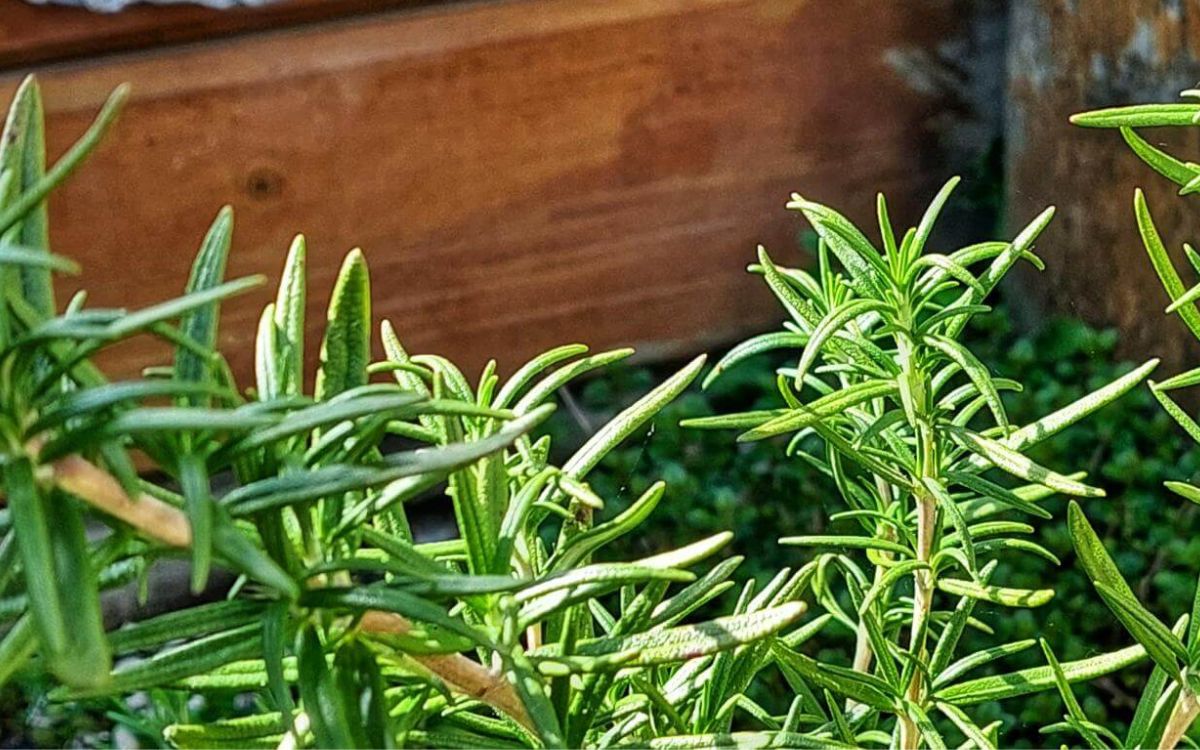
Cooking with fresh herbs — Use a rosemary sprig dipped in oil to brush over grilled or seared meats for an amazingly fresh rosemary infusion.
ADVERTISEMENT CONTENT BELOW
Cooking with fresh sage — Savory, musky sage ties together sausage and stuffing seasoning. Fresh sage complements poultry, pork, vegetables, and fish. It also adds an earthy dimension to pasta, lentils, poultry, pork, vegetables, and fish. When fried briefly in butter, it lends a lovely aromatic nuttiness.
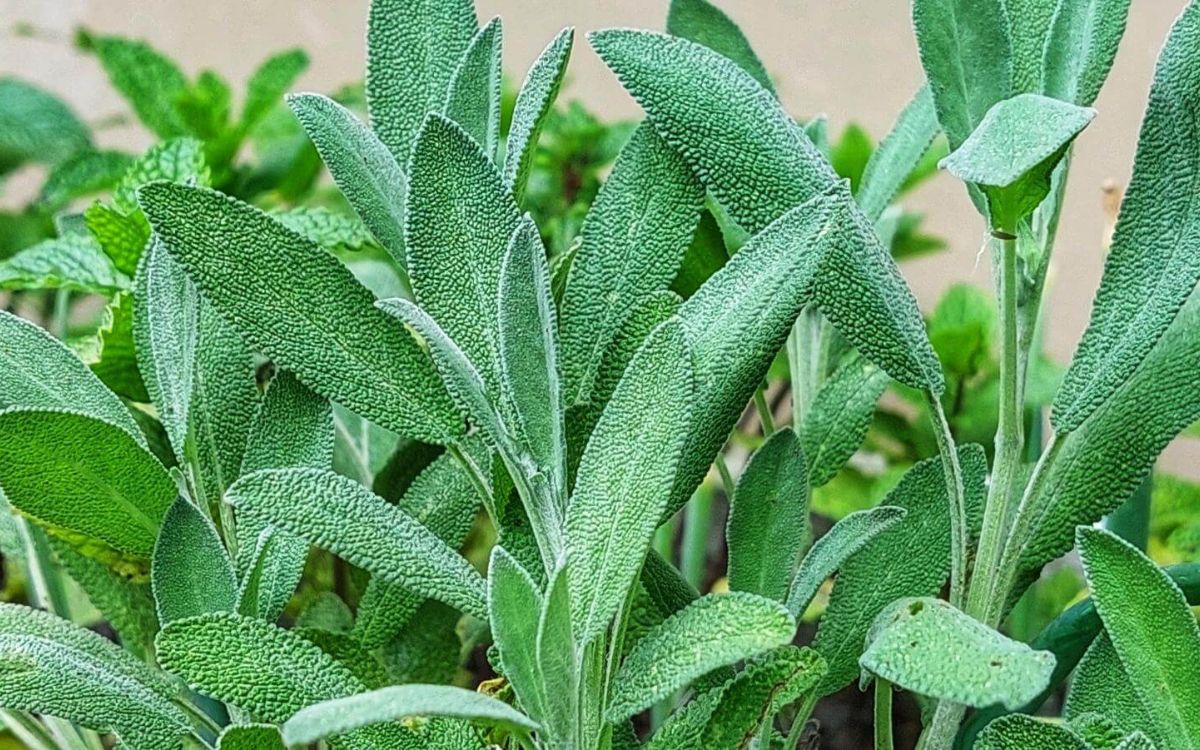
Cooking with fresh herbs — Make sage-infused oils or vinegar by steeping fresh sage leaves in oil or vinegar. This is great if you have an abundance of fresh sage. These infused oils and vinegar can be used as dressings, marinades, or for drizzling over roasted vegetables.
Cooking with fresh chives — Delicate, grassy chives add a lively punch of flavor and a vivid pop of color to dishes without overpowering them. Their mild onion notes make them a versatile finishing herb to sprinkle over soups, salads, and baked potatoes right at the end. Both the slender green stems and pretty purple blossoms carry flavor.
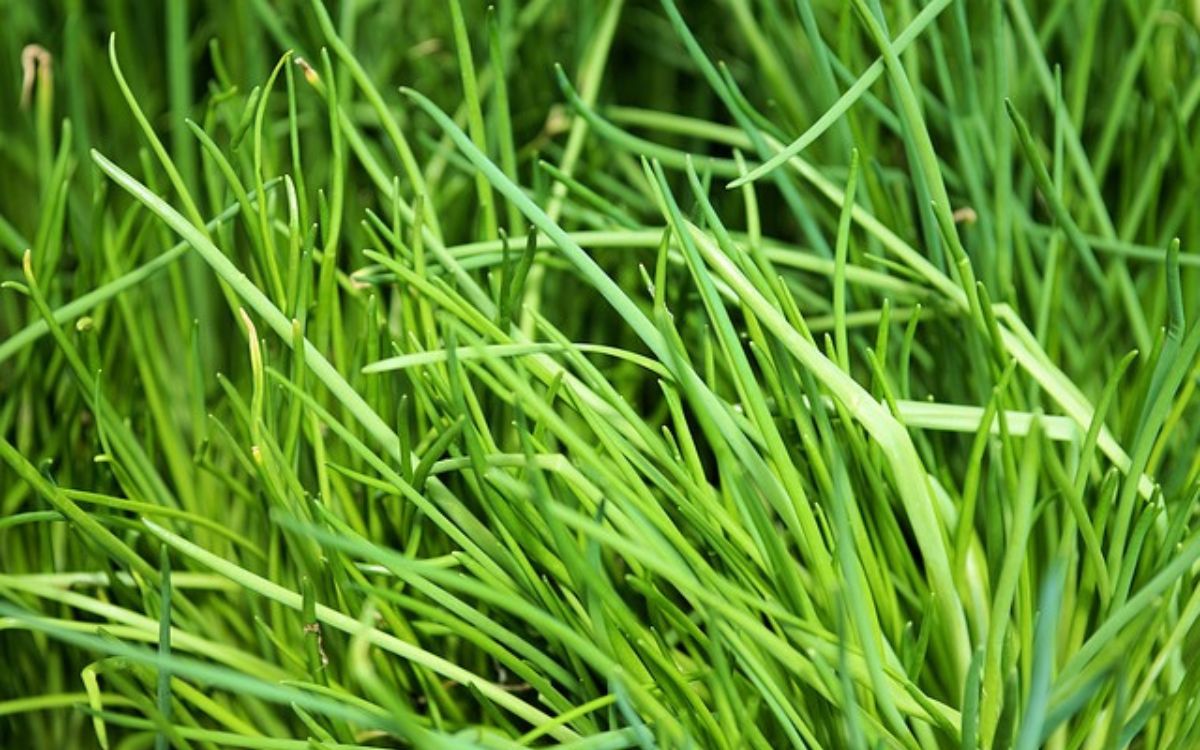
ADVERTISEMENT CONTENT BELOW
Cooking with fresh herbs — Combine finely chopped chives with other fresh herbs like thyme, rosemary, and parsley to create a versatile herb blend. Use this mixture to season sautéed vegetables, grilled meats, or seafood.
Cooking with fresh basil — Fresh basil reminds me of summer. Its sweet flavor with hints of anise and mint makes it indispensable. Delicious with tomatoes, seafood, green beans, asparagus, and chicken. Sweet Genovese basil is what I use the most; however, you can try different varieties like lemon basil, cinnamon basil, and purple basil.
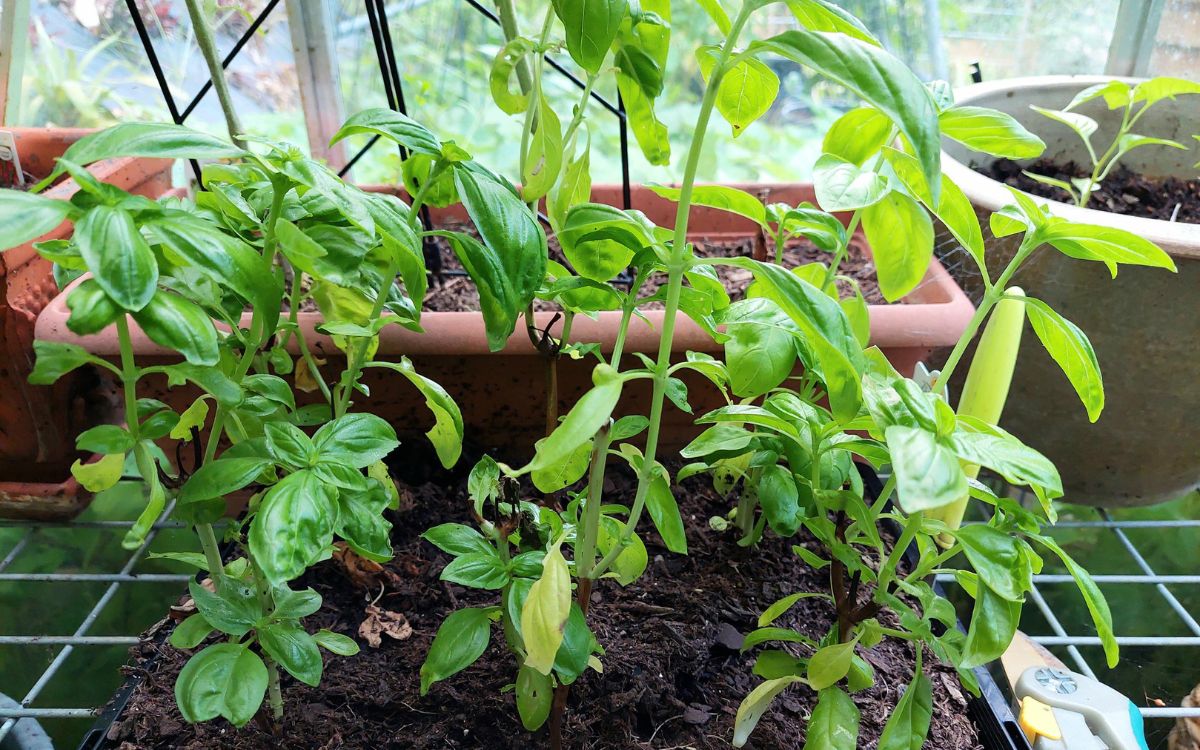
Cooking with fresh herbs — Handle fresh basil leaves gently to avoid bruising or damaging them. Use a sharp knife to chiffonade (thinly sliced into ribbons) the leaves for optimal texture and presentation.
ADVERTISEMENT CONTENT BELOW
Cooking with fresh cilantro —The refreshing, citrusy taste of cilantro is an essential component of salsa, guacamole, curry pastes, Thai dishes, Mexican cuisine, and more. The leaves, tender stems, and roots hold plenty of flavor.
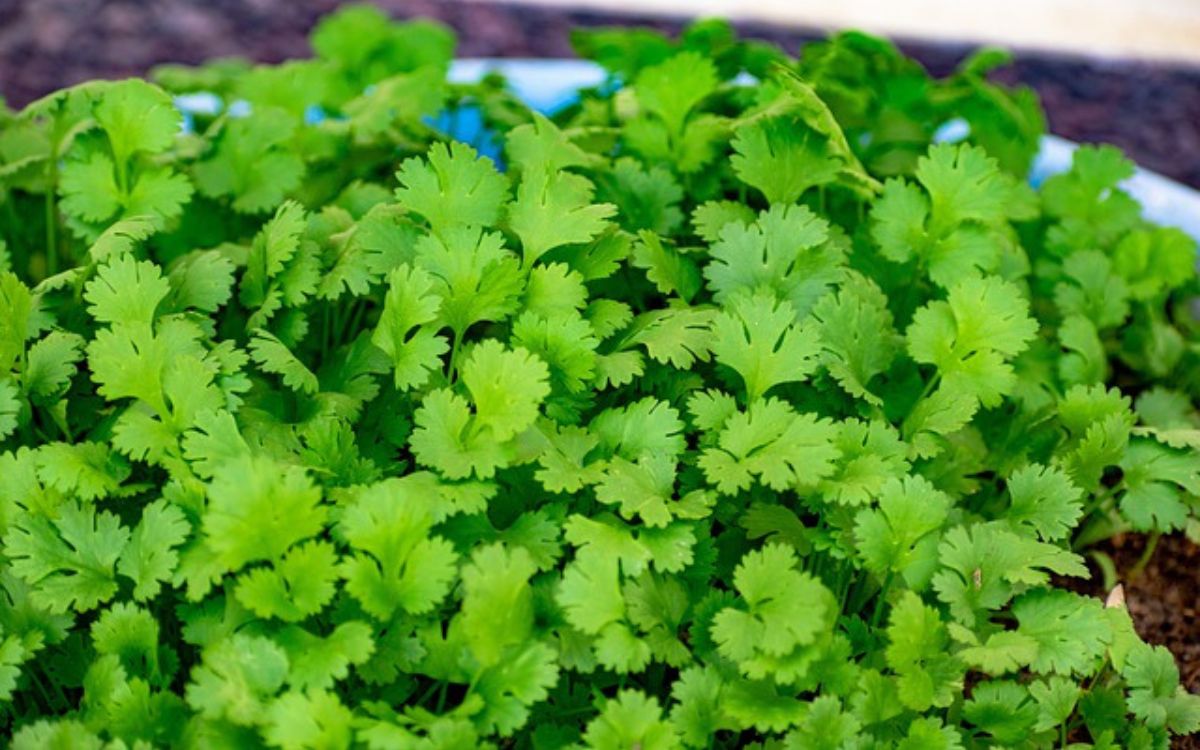
Cooking with fresh herbs — Cilantro is a versatile herb that can be used in many ways. Leaves for an aromatic colorful garnish and stems and roots are blended into pastes and marinades.
Cooking with fresh oregano — Renowned for its robust aroma, often described as intensely aromatic with hints of eucalyptus. Its flavor profile combines slight bitterness and pungency, comprising earthy, hay, and minty notes. These characteristics contribute to its popularity as a versatile herb in Mediterranean and Italian cuisines.
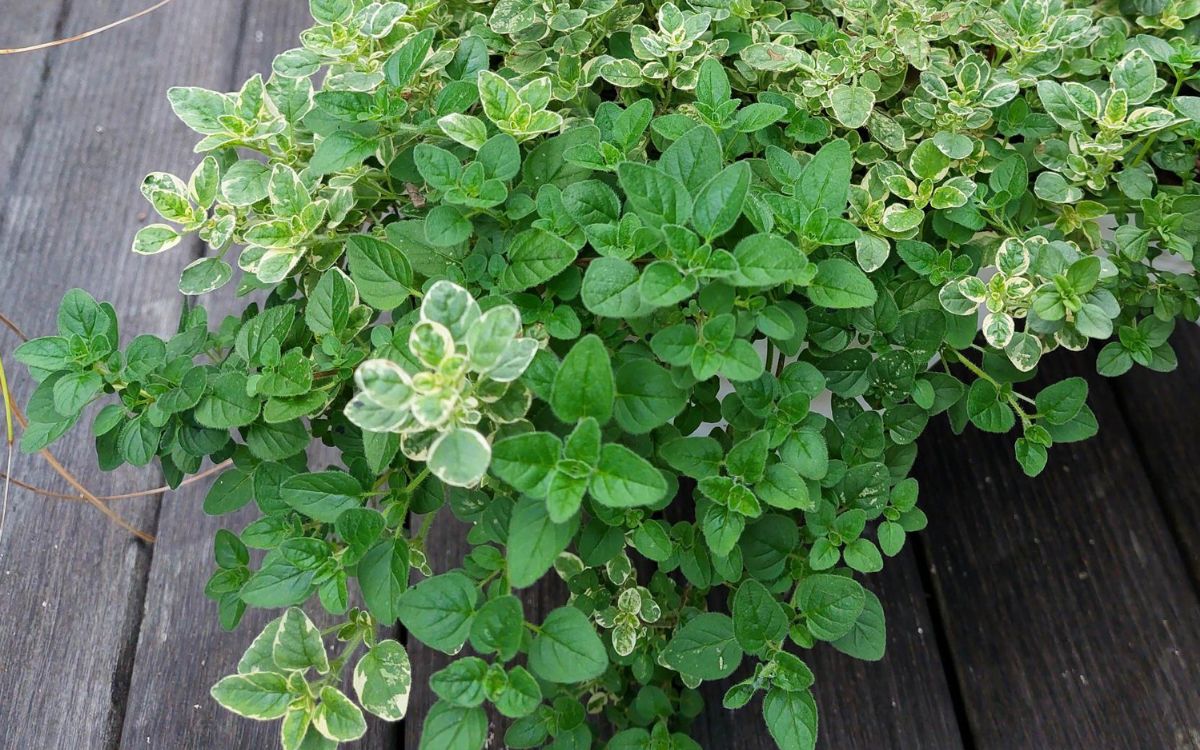
ADVERTISEMENT CONTENT BELOW
Cooking with fresh herbs — Fresh oregano is a robust herb that can withstand being cooked. However, its flavor can diminish if added too early. For best results, add fresh oregano towards the end of cooking to maintain its aroma and flavor.
Cooking with fresh marjoram — Mildly sweet floral marjoram has hints of pine and citrus. It delicately complements eggs, cheese, vegetables, poultry, fish, and tomato-based dishes. Balance marjoram with complementary flavors such as garlic, lemon, oregano, and basil.
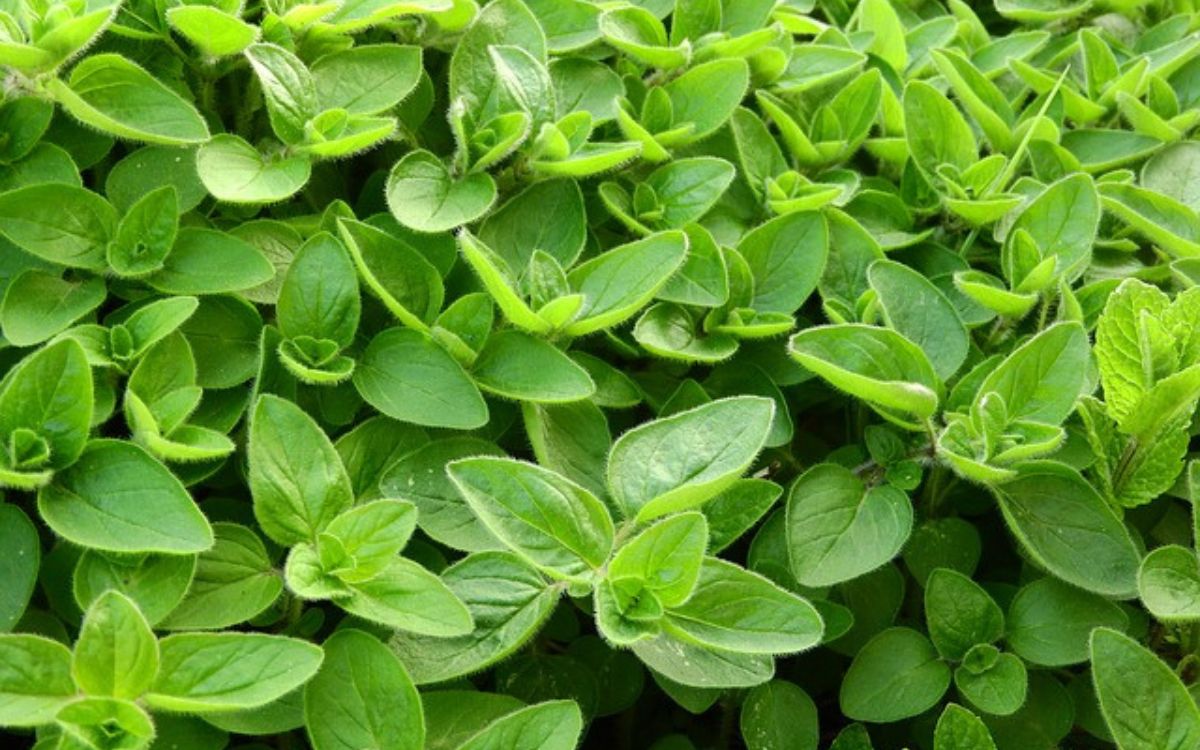
Cooking with fresh herbs — Use fresh marjoram leaves as a garnish to add flavor, color, and freshness to finished dishes. Pluck the leaves from the stem and sprinkle them over pasta, grilled meats, and warm and cold salads before serving.
ADVERTISEMENT CONTENT BELOW
Cooking with fresh bay leaves — Bay leaf’s subtle sweetness requires a slight touch. It infuses wonderful flavor into braised and slow-cooked dishes when used judiciously. Just one or two leaves complement soups, casseroles, stews, and grains with a delicious herbal essence. Always remove the leaves before serving since they’re too tough to eat.
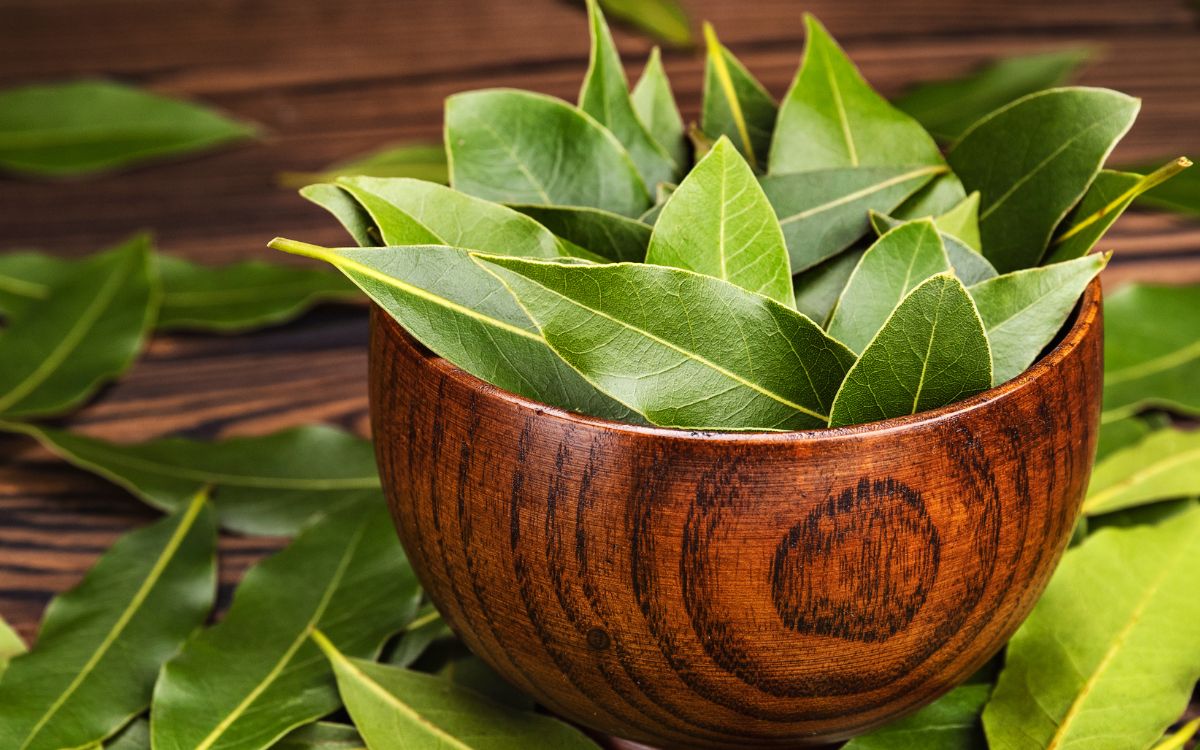
Cooking with fresh herbs — Whole fresh bay leaves are typically preferred in cooking because of their fresh herbaceous flavor, and they are easier to remove before serving. However, if you only have ground bay leaf powder on hand, use it sparingly, as it is more potent. Start with a small amount and adjust to taste.
Now that you’re armed with my insider tips for selecting, storing, and using these nine culinary herbs, your cooking will surely reach new heights of flavor!
Start simple by adding a sprinkle of fresh herbs to finished dishes. Soon, you’ll begin intuitively cooking with fresh herbs and combining them as exciting flavor foundations for your signature recipes.
Cooking is a science and a skill that requires a deep understanding of both the technical and creative aspects. Cooking is also a matter of precise measurements and ratios.
For example, baking is particularly sensitive to accurate measurements and temperatures. A slight deviation in the amount of an ingredient or cooking degrees can result in a completely different outcome. So, to help you, here is a handy little unit converter tool for cooking without guesswork.